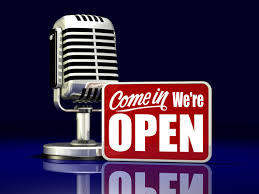 Radio advertising can be a very effective way of shifting your goods or services. But like a lot of advertising, that gives the appearance of being simple, there are many factors that need to be considered.
Radio advertising can be a very effective way of shifting your goods or services. But like a lot of advertising, that gives the appearance of being simple, there are many factors that need to be considered.
Since potential customers listen to the radio at home, at work and in their cars, this is a medium that can be effective in promoting your brand or your products.
Essentially, for using national, metropolitan or regional radio, you need to weigh up the pros and cons for your business, you need to investigate carefully what is involved and you need to fully assess costs.
The value of radio as a communication medium for you depends on whether your target market can be easily reached via radio. For some local businesses, a regional radio station that covers a fairly restricted geographical area can be ideal. Other businesses could look at metropolitan or national coverage. Because of its tendency to target particular demographics, radio is an ideal way of reaching a specific target audience.
Such targeting allows you to tailor your message to meet the needs of the different types of audiences that listen to different stations.
For any SME, where there is a chance that radio will be used on a regular basis, time slot testing is worthwhile. You may find that response varies dramatically according to the time of day your advertisement is run. For example, in promoting a new trendy alcoholic drink you would expect that the target market (say, 18 to 30 year-olds) would be more responsive at 8.30pm on a Friday night than at 7.00am on a Monday morning.
If the station you are planning to use attracts various listener groups, such as teenagers and over 50s, the station’s programming will help to determine which time slots are most likely to attract your target market. If, for example, you are promoting financial plans and you have determined that you target market is executive women aged 25 to 45, ads run during a station’s football program are unlikely to reach your target market.
Once you are satisfied that radio can reach your desired target market, you need to consider the verbal versus visual needs of your advertising. Obviously, radio advertising relies, firstly, on your ability to adequately describe a product/service and its attributes, and secondly, the ability of your listeners to visualize your offering. Can you stimulate interest in your product/service through verbal means in just a few seconds? If so, radio may be your answer.
In terms of costs, there is more to radio advertising than buying airtime. You need to be aware of all the elements involved. You may need to pay a copywriter to write the script for your advertisement, as well as actors or voice-over specialists. If you commission your own music or jingle the costs can be quite significant, as you may need to pay a composer, musicians and singers.
On the other hand, existing music will require permission to play and normally involves airplay royalties. Other likely costs include studio time, technicians and sound effects. Like television, radio advertising time slots on air are most expensive when they are purchased ad-hoc or at the last minute. Careful planning will give you access to the widest range of slots and give you greater leverage for negotiating discounts and/or free extras.
Of course, it is possible to produce radio advertisements yourself. However, it is generally preferable to pay a professional advertising agency to produce your ad. Amateur radio ads using untrained voices usually sound very unprofessional, and such a sound may bring ridicule upon your product or service offering. Once you have appointed an agency, you will need to brief the agency on your requirements. You can’t expect the agency to miraculously know what you want. In briefing, it is best to provide as much information as possible.
In particular, the agency needs to be told about your objectives and your target market. If they know their business the agency people will question you in detail about the type of people you are trying to reach.
Once you have an ad agency working for you, it can do the airtime buying for you, if you want. While different time slots suit different audiences, there is also a vast range in price, depending on the time of day and the day of the week.
Overall, successful radio advertising involves getting your target right and keeping your costs under control. From there, the fundamental creative challenge is to induce listeners to prick up their ears.
Sound, music, voices, accents, both male and female voices for extra rhythm and a conversational style in which speakers talk directly to the listener are all elements that need to be brought together.
When you can do all that, and do it well, radio can have your product walking out the door.
Copyright 2003, RAN ONE Inc. All rights reserved. Reprinted with permission from www.ranone.com.

 Chris’ combination of academic credentials, career experience and temperament ideally suit his calling as a business development advisor. Clients say he has a mind for business and a heart for service.
Chris’ combination of academic credentials, career experience and temperament ideally suit his calling as a business development advisor. Clients say he has a mind for business and a heart for service.